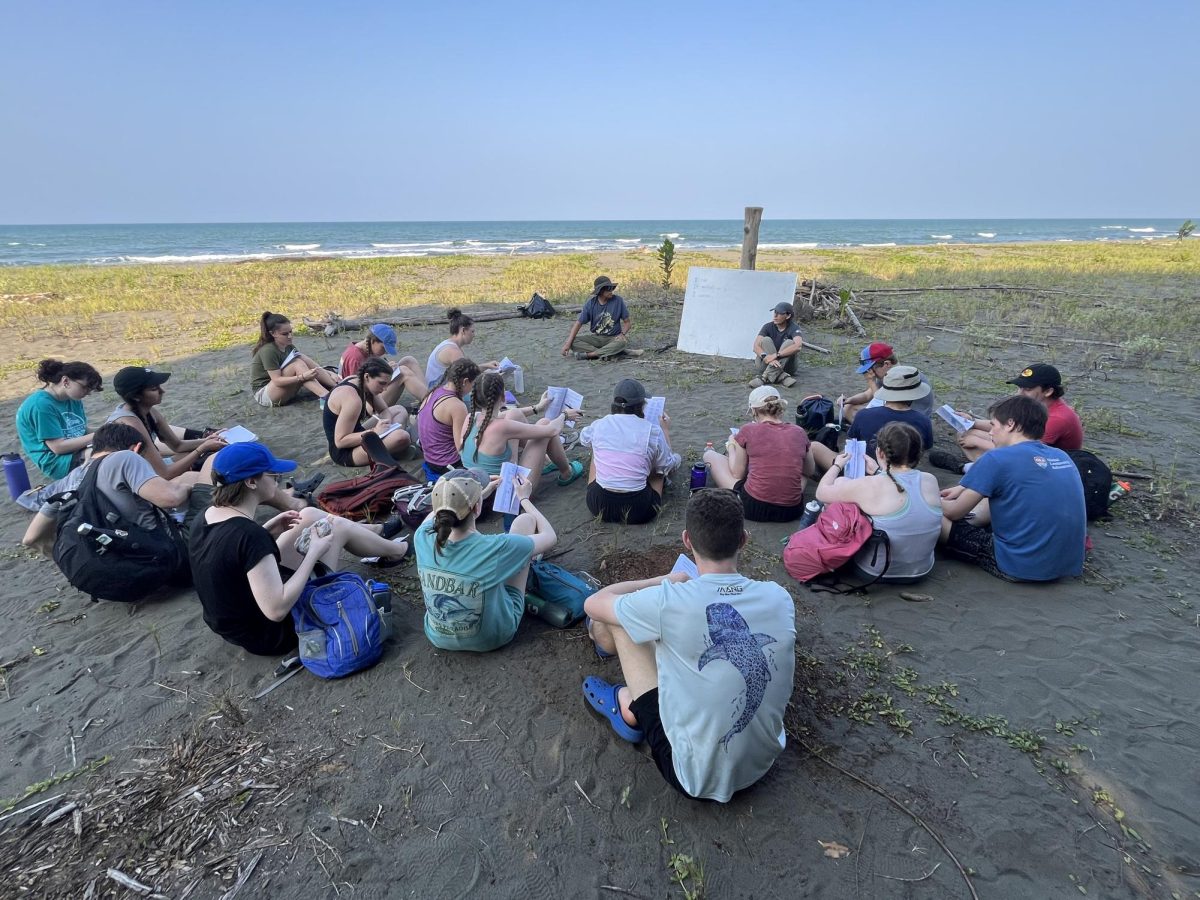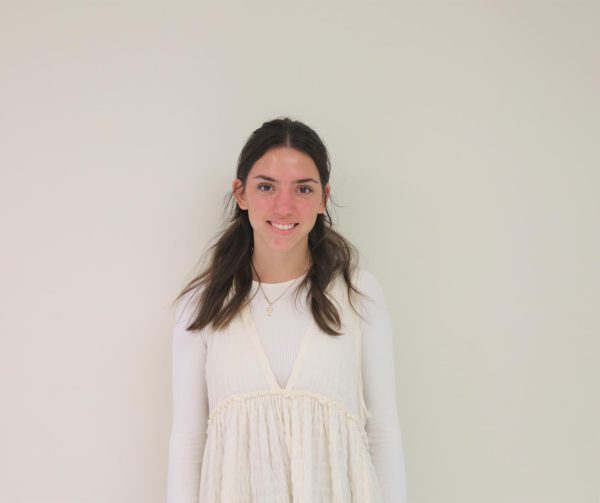Three long hours of walking have passed and Emma Schultz ‘24 and the rest of her group patiently keep their eyes peeled for sudden movement. Exhausted, the crew decided to take a small break before continuing on along the Costa Rican beaches.
Suddenly, a leatherback turtle emerged from the water and slowly started crawling toward Schutlzs’ group. Stunned by the turtle, the whole group became silent and simply stared in amazement, before jumping into action.
This spring break, juniors and seniors who have taken AP Biology had the opportunity to fly to two main spots in Costa Rica to research and learn about different organisms, she said. The students were tasked with researching an organism of their choice as well as aiding scientists and researchers with turtle censuses each night. This included tracking various data and observations of the leatherback turtles found on the beach.
“We stayed at the Pacuare Reserve for three nights in which we did our turtle censuses,” Schultz said. “At Pacuare, we had no electricity or warm water which was a bit of an adjustment, but it eventually became easy to navigate with the support and reliance of the group of kids we had [classmates].”
During their stay at the reserve, the main goal was to aid scientists and researchers in conserving the population of leatherback turtles. In order to do that, the students completed their turtle census in small groups and would walk along the beach in four hour shifts during the night, AP Biology teacher Angela Patel said. If a turtle was spotted, the group would wait until she found her nesting spot and then begin with their tasks.
“We would tag them on their back flippers in order to identify them again if they ever traveled back to shore,” Schultz said. “Then we would measure her shell, check for damages on her shell and flippers and wait for her to lay her eggs.”
In order to conserve and keep the eggs from being washed away and safe from predators, the students would place a bag deep in the turtle nest and once the leatherback turtle completed laying her eggs, the eggs would be taken to a stable nest where the babies could safely grow, Patel said.
“The cool thing about leatherbacks is that the only time they come out of the water is when they’re laying their eggs,” Patel said. “Otherwise they’re always swimming, so you will never see a leatherback during the day. So that’s the other cool thing about it: nobody sees leatherbacks.”
From March 22 – March 29, the group went on day and night hikes and spent time in a classroom in the rainforest to start collaborating on group research, Schultz said. The students had the opportunity to learn about the local biodiversity, including native flora and fauna, as well as information about health ecosystems and the relationship between organisms.
“In terms of knowledge and science practices, I think this trip totally elevated that for students,” AP Biology teacher Annette Orrico said. “We were with scientists and we were doing the work that scientists do which was really cool. We witnessed the conservation efforts that are being done in Costa Rica and now we can bring them back here.”
There were many things to learn on the trip, Abby Schuler ‘24 said. Some things include how much pollution ranging from chemical to light pollution and littering are affecting animal populations as well as the forest. Light pollution deters turtles from coming up on the beach which makes it difficult to help protect them and increase their population.
“The best part was watching the students,” Orrico said. “It was surreal. Not a lot of people can say they were up close and personal with a leatherback turtle. Just to see that excitement from the students as they lay their eyes on the turtle [was special].”
This was the first year AP Biology students had the opportunity to take this trip, Orrico said. The plan is to keep proposing this trip each year as it is a unique experience to immerse students in real science and to cultivate environmental stewardship.





















![Movie poster for '[Rec]" (2007).](https://www.lionnewspaper.com/wp-content/uploads/2023/04/rec-640x900.jpg)





